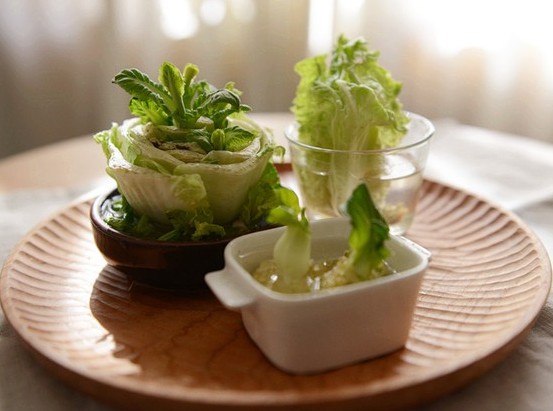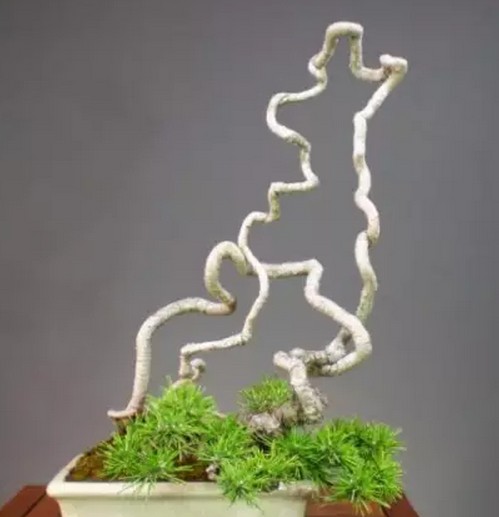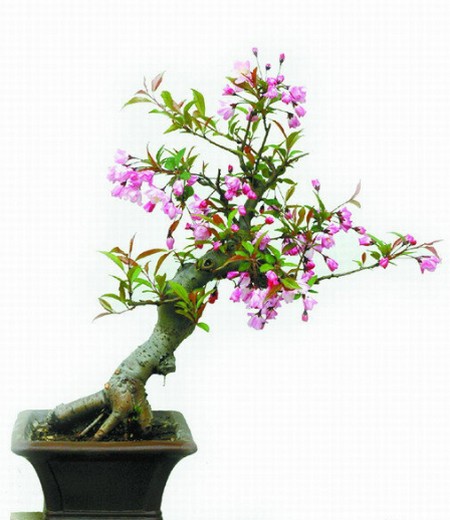Various methods of making bonsai for vegetables
Potted vegetables have strong ornamental and practical value, and can be used as miniature bonsai to decorate the room, courtyard and balcony. Potted vegetables are easy to get materials, easy to grow and easy to live. They are generally planted with seeds, tubers, tubers, fresh stems, etc., which are not limited by regions and seasons, and can be often planted. The vegetables commonly used in indoor cultivation are: Cherry tomato, colorful pepper, miniature eggplant, cucumber, colorful lettuce, fragrant eggplant, flying saucer pumpkin, cucumber, unsupported beans, colorful spinach, sprouts and so on.

[vegetable bonsai is skillfully made]
At the end of winter and the beginning of spring, make a few potted vegetable bonsai by yourself, or put a desk, or hang in front of the window, which can make the bedroom green early and experience the fun of doing it yourself.
Onion daffodils:
Place the onion in a porcelain basin, press it with pebbles, pour in clean water, and change the water every 3 to 5 days. After two weeks, it will grow lush new leaves, which look like daffodils.
Ginger Cuizhu:
Take several pieces of fresh ginger, put the bud head up in a shallow basin, then cover it with 1 cm thick fine soil, pour through the water and place it on the sunny windowsill. Soon, fresh ginger will sprout buds and gradually pull out green leaves, like a clump of green bamboo.
Carrots and cedar:
When cutting vegetables, you will throw away several sections of pedicels with rotten scars. You can pick them up, wash them, flatten the bottom, put them in a pot of daffodils and fill them with half a basin of water. Three or five days later, thin green leaves will grow on the carrot stalk, and a little sunlight will make it grow strong. The carrot tassel will grow green and look like a cedar.
Radish basket:
Hollow the bottom of a larger radish in the shape of a water cup, then stuff it with a ball of cotton, sprinkle a layer of wheat seed evenly on top, sprinkle some water, and hang it in front of the sunny window. A week later, the wheat seed turned into green wheat seedlings, and the radish grew tender green leaves, shaped like a flower basket.
Celery stamens:
Cut off a section of the root of celery (about 7 cm long with roots) with a knife and place it in a water bottle of equal height (that is, the bottom section of the bottle). Water injection should flood the roots. 3After 5 days, celery stamens will be pulled out in clusters.
Jade and garlic spit green:
When the weather gets warmer, garlic will sprout, peel off the skin, peel it into garlic cloves and string them into a string, and finally form a circle, which can be safely placed in a daffodil pot. The iron wire can't pass through the middle of the garlic clove. It has to be a little sideways so as not to damage the bud. Add water, bask in the sun, and the green leaves come out. Garlic leaves look like daffodils, but they don't blossom, but look at that pot of green, and it's interesting in it.
Bonsai with leek:
Its production method is the same as garlic bonsai, very elegant leek leaves evergreen, green, lovely.
Cultivation points for attention:
According to the cultivation characteristics of different vegetable varieties, ① chooses the correct stubble, suitable seedling raising and planting and selling period.
According to the fertilizer requirement characteristics of different vegetables, ② allocates nutritious soil (liquid) in proportion. Fertilizers should be based on pollution-free organic fertilizers, with less use of chemical fertilizers, especially nitrogen fertilizers. If possible, tissue culture and soilless cultivation can be adopted.
The dwarf type should be selected for ③. In the case of few dwarf varieties at present, plant growth regulators can be used to control plant growth, which is beneficial to both ornamental and manual management.
The cultivation of ornamental vegetables in ④ should be in line with people's aesthetics, and pruning, erecting, modeling and landscaping should be carried out according to different vegetable varieties and market demand.
⑤ potted miniature ornamental vegetables must be pollution-free vegetables, and their diseases and insect pests should adopt pollution-free control technology, mainly agricultural control and biological control, supplemented by chemical control in principle.
Time: 2019-05-26 Click:
- Prev

The method of making bonsai with root-lifting tree stump
The root is an important part of the stump bonsai. The distribution and shape of the root directly affect the ornamental value of the bonsai. Through planned cultivation, the roots of the stump are turned over, changed soil and changed pots year by year. In this process, the roots are arranged, the extension direction of the roots is mastered, and then they continue to be planted, gradually revealing the soil surface of the roots.
- Next

The method of making bonsai of crabapple with vertical silk
The flowering period of Begonia is after plum blossom. The pink flowers are luxuriant and beautiful, especially the budding red buds, hanging on the silky stalk elegant in the wind, graceful and moving. With rose-red petals and delicate red flowers, they are very popular woody flowers in the courtyard.
Related
- Fuxing push coffee new agricultural production and marketing class: lack of small-scale processing plants
- Jujube rice field leisure farm deep ploughing Yilan for five years to create a space for organic food and play
- Nongyu Farm-A trial of organic papaya for brave women with advanced technology
- Four points for attention in the prevention and control of diseases and insect pests of edible fungi
- How to add nutrient solution to Edible Fungi
- Is there any good way to control edible fungus mites?
- Open Inoculation Technology of Edible Fungi
- Is there any clever way to use fertilizer for edible fungus in winter?
- What agents are used to kill the pathogens of edible fungi in the mushroom shed?
- Rapid drying of Edible Fungi

